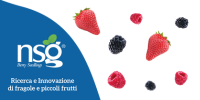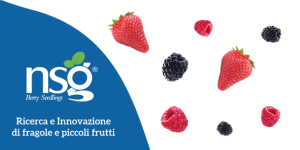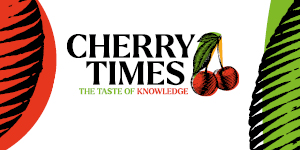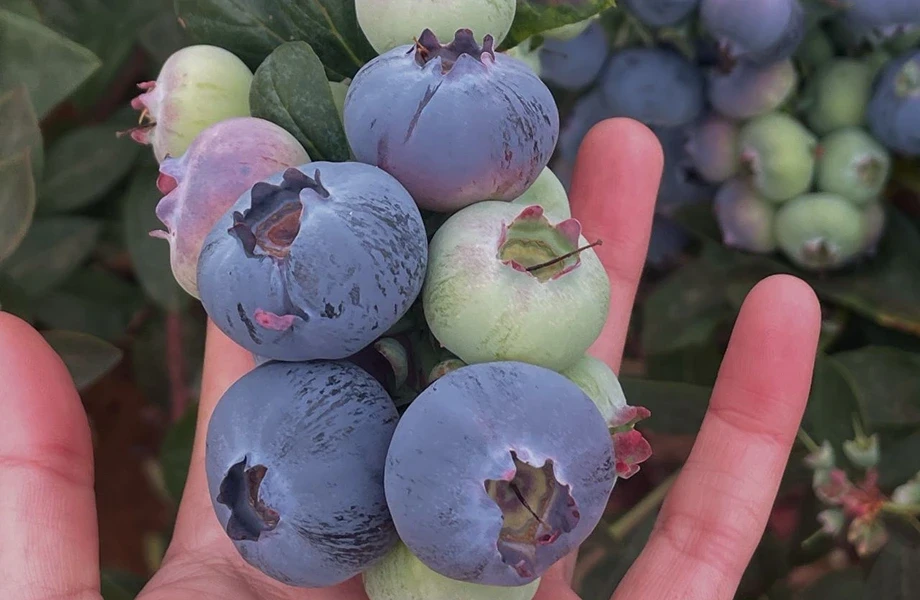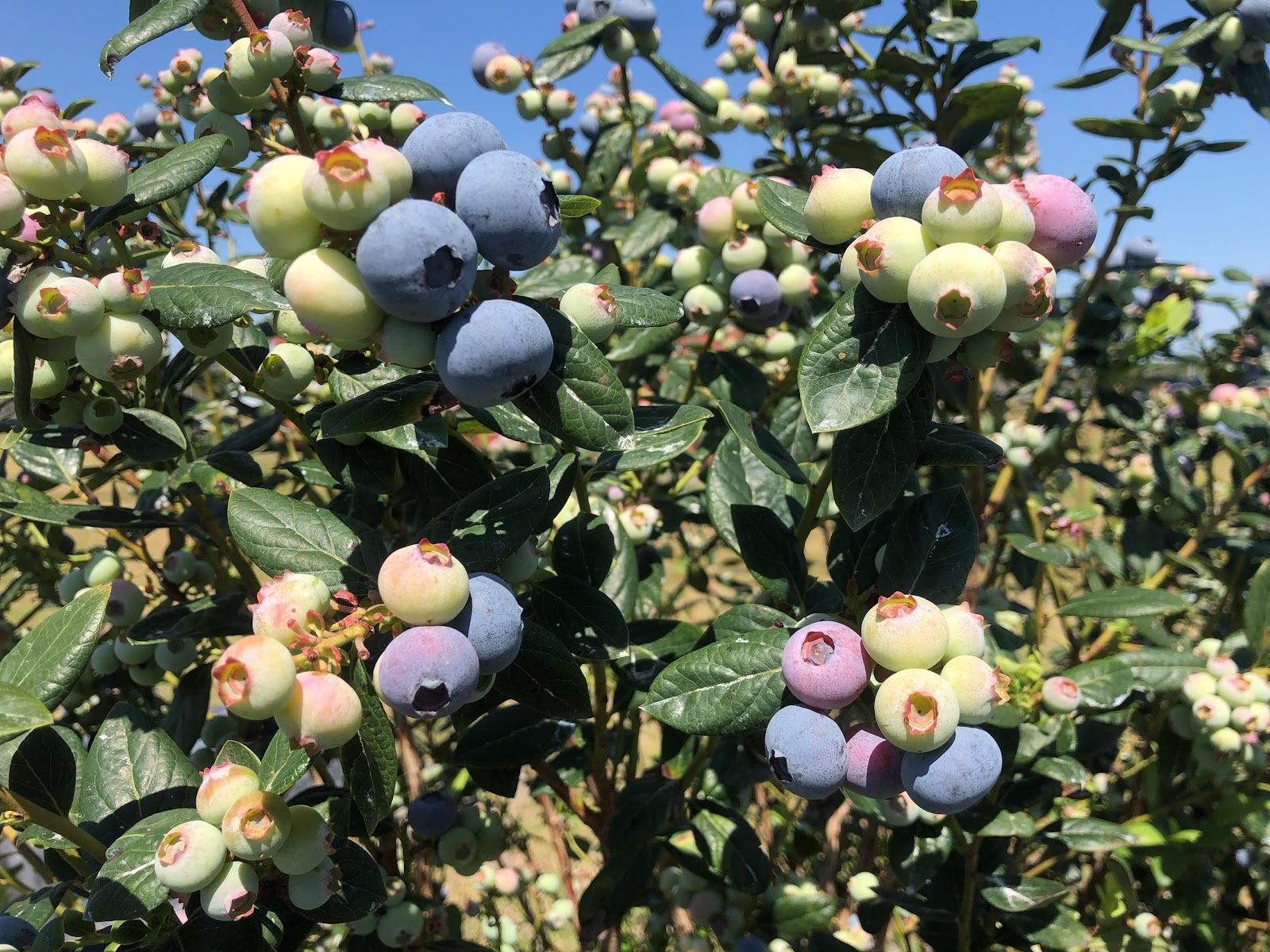The recent release of the "2025 Peruvian Price Quality Index (PQI) for Blueberries" by Agronometrics confirms a structural shift in the industry: quality-based differentiation has now become the main driver of profitability, with the price gap between premium and standard fruit surpassing all previous records.
Agronometrics has launched the "2025 Peruvian Price Quality Index for Blueberries," a fundamental report that provides the industry with a clear analysis of how varietal quality is impacting the prices of blueberry exports from Peru. The PQI is a proprietary framework developed to quantify the relationship between variety and price, based on six seasons of export data provided by SUNAT (the Peruvian tax and customs authority).
Premium translates into tangible financial returns
The key findings of this study highlight that premium fruit earned $2.28/kg more than standard fruit. This price gap between premium and standard categories reached a record level in the 2024/2025 season. It represents an increase of more than tenfold compared to the gap recorded in 2019/2020, signaling that quality premiums are growing and measurable at the producer level.
The PQI tracks price performance by variety, distinguishes between premium and standard categories, and measures the evolution of these segments over time, offering stakeholders a transparent view of what drives value in the market.
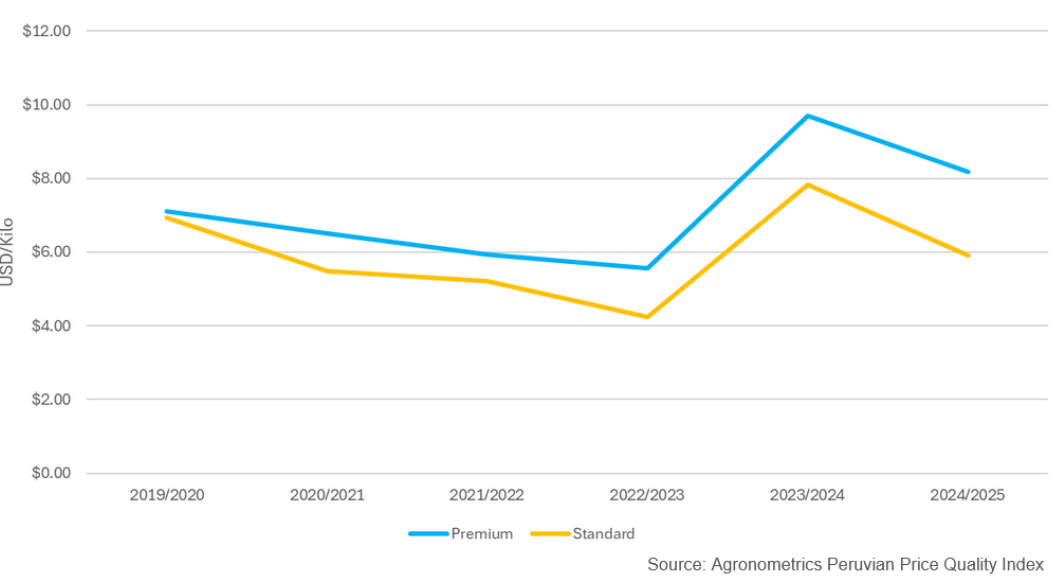 The price of standard Peruvian blueberries compared to premium blueberries
The price of standard Peruvian blueberries compared to premium blueberries
The rise of premium volumes and winning varieties
The market is tangibly rewarding premium traits: varieties designated as premium are rapidly expanding their market share. Premium fruit volume has exceeded 22,000 metric tons.
Retailers and importers are shifting their purchasing strategies, actively rewarding flavor, texture, and shelf life, rather than focusing solely on volume. The PQI provides concrete data confirming that premium traits translate into real financial returns for growers and exporters.
Varieties such as Sekoya Pop are leading the market. Sekoya Pop, in particular, achieved an average of $1.34/kg above the market average. Other varieties that stood out for strong performance include Eureka, Rosita, Raymi, and Sekoya Beauty. By contrast, varieties such as Ventura and Biloxi have consistently been classified in the standard category.
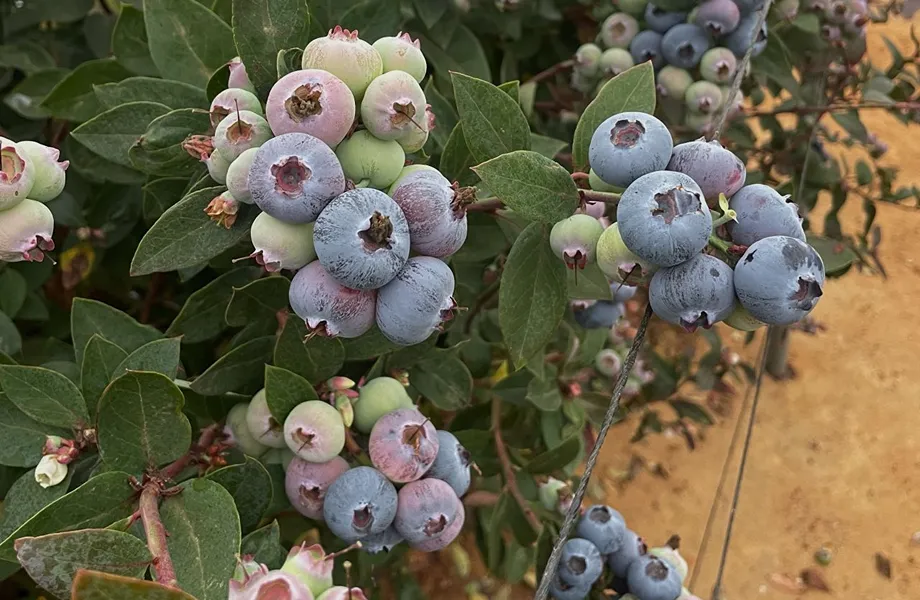
Strategic implications for the industry
This report is much more than a simple snapshot; it reflects a structural change in the Peruvian blueberry industry. The strategic conclusion is clear: production scale alone is no longer sufficient to ensure profitability; profit increasingly depends on differentiation and quality.
For producers, exporters, and investors, the PQI serves as an essential strategic guide for decision-making regarding varietal selection, marketing strategies, and long-term competitiveness.
The analysis underpinning the PQI is based on a rigorous methodological process:
- Varietal Identification: Natural language processing (NLP) is used to extract cultivar names from export declarations.
- Price Normalization: FOB prices are adjusted against a smoothed market average to isolate varietal influence.
- Statistical Rigor: Varieties are classified using 95% confidence intervals, ensuring that only statistically significant price differences are labeled as premium or discounted.
The 2024/2025 dataset covers 32,752 export records.
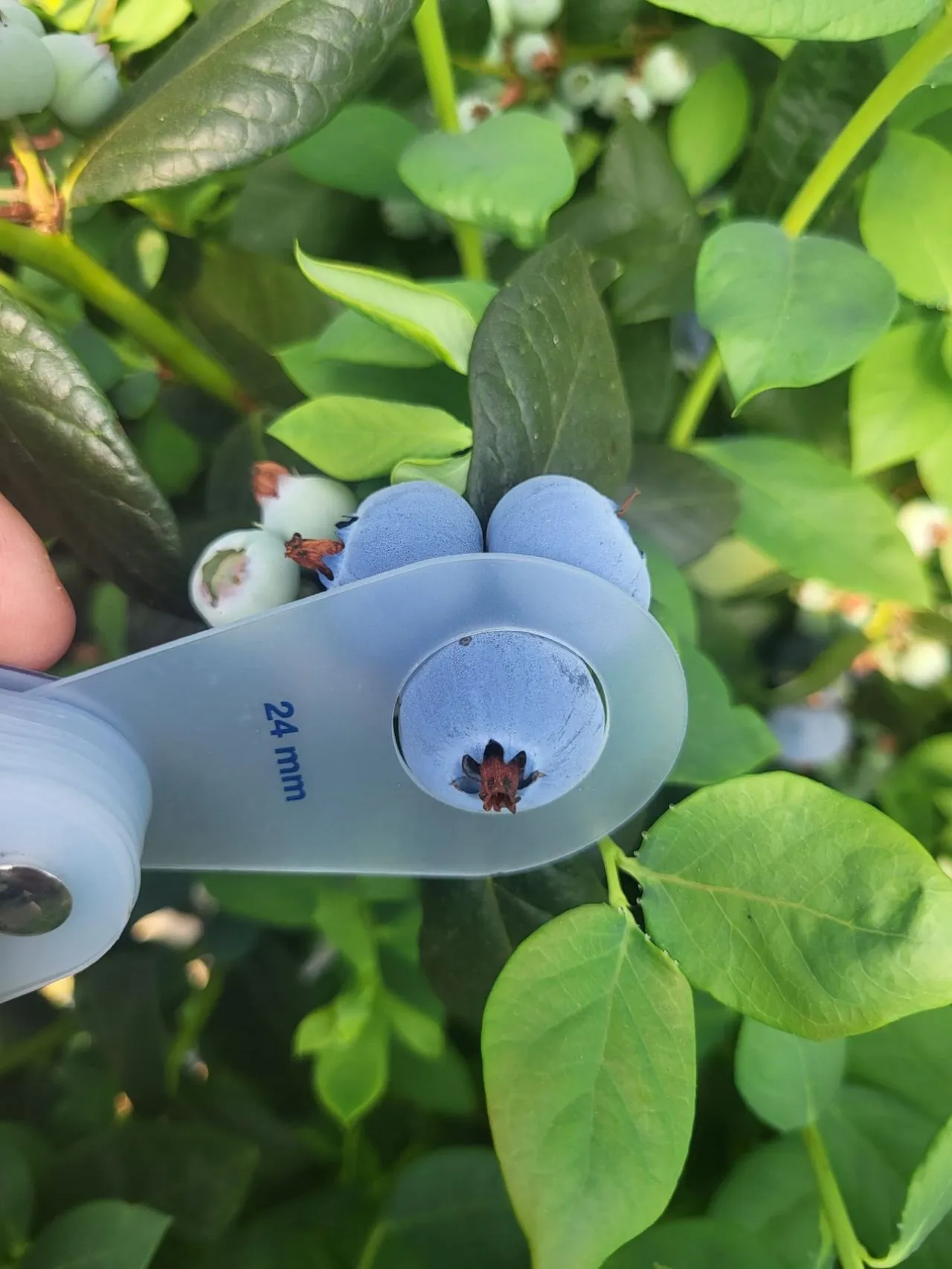
Future outlook
Agronometrics is committed to continuously improving the PQI, with plans to expand varietal coverage through industry collaboration, enhance seasonal tracking with near real-time updates, and broaden the analysis to incorporate consignees.
This tool is designed to help the industry move toward a future where quality is rewarded, data drives action, and every stakeholder benefits from greater transparency.
The full "2025 Peruvian Price Quality Index for Blueberries" report is available for free download. For questions or to become a sponsor of future editions, please contact Agronometrics.



